| Weight | 1 lbs |
|---|---|
| Dimensions | 9 × 5 × 2 in |
| host | mouse |
| isotype | IgG1 |
| clonality | monoclonal |
| concentration | concentrate, predilute |
| applications | IHC |
| reactivity | human |
| available size | 0.1 mL, 0.5 mL, 1 mL concentrated, 7 mL prediluted |
mouse anti-PD-1 (PDCD1) monoclonal antibody (ZM357) 6326
Price range: $160.00 through $528.00
Antibody summary
- Mouse monoclonal to PD-1 (PDCD1)
- Suitable for: Immunohistochemistry (formalin-fixed, paraffin-embedded tissues)
- Reacts with: Human
- Isotype:IgG1
- Control: Lymph node
- Visualization: Cytoplasm & Membrane
- 0.1, 0.5, 1.0 mL concentrated, 7 mL prediluted
mouse anti-PD-1 (PDCD1) monoclonal antibody ZM357 6326
| target relevance |
|---|
| Protein names Programmed cell death protein 1 (Protein PD-1) (hPD-1) (CD antigen CD279) |
| Gene names PDCD1,PDCD1 PD1 |
| Mass 31647Da |
| Function FUNCTION: Inhibitory receptor on antigen activated T-cells that plays a critical role in induction and maintenance of immune tolerance to self (PubMed:21276005). Delivers inhibitory signals upon binding to ligands CD274/PDCD1L1 and CD273/PDCD1LG2 (PubMed:21276005). Following T-cell receptor (TCR) engagement, PDCD1 associates with CD3-TCR in the immunological synapse and directly inhibits T-cell activation (By similarity). Suppresses T-cell activation through the recruitment of PTPN11/SHP-2: following ligand-binding, PDCD1 is phosphorylated within the ITSM motif, leading to the recruitment of the protein tyrosine phosphatase PTPN11/SHP-2 that mediates dephosphorylation of key TCR proximal signaling molecules, such as ZAP70, PRKCQ/PKCtheta and CD247/CD3zeta (By similarity). {ECO:0000250|UniProtKB:Q02242, ECO:0000269|PubMed:21276005}.; FUNCTION: The PDCD1-mediated inhibitory pathway is exploited by tumors to attenuate anti-tumor immunity and escape destruction by the immune system, thereby facilitating tumor survival (PubMed:28951311). The interaction with CD274/PDCD1L1 inhibits cytotoxic T lymphocytes (CTLs) effector function (PubMed:28951311). The blockage of the PDCD1-mediated pathway results in the reversal of the exhausted T-cell phenotype and the normalization of the anti-tumor response, providing a rationale for cancer immunotherapy (PubMed:22658127, PubMed:25034862, PubMed:25399552). {ECO:0000269|PubMed:22658127, ECO:0000269|PubMed:25034862, ECO:0000269|PubMed:25399552, ECO:0000303|PubMed:28951311}. |
| Subellular location SUBCELLULAR LOCATION: Cell membrane {ECO:0000269|PubMed:30487606}; Single-pass type I membrane protein. |
| Structure SUBUNIT: Monomer (PubMed:26602187). Interacts with CD274/PDCD1L1 (PubMed:26602187). Interacts with CD273/PDCD1LG2 (By similarity). Interacts with FBXO38; leading to ubiquitination and degradation of PDCD1 by the proteasome (PubMed:30487606). {ECO:0000250|UniProtKB:Q02242, ECO:0000269|PubMed:26602187, ECO:0000269|PubMed:30487606}. |
| Post-translational modification PTM: Ubiquitinated at Lys-233 by the SCF(FBXO38) complex, leading to its proteasomal degradation (PubMed:30487606). Ubiquitinated via 'Lys-48'-linked polyubiquitin chains (PubMed:30487606). {ECO:0000269|PubMed:30487606}.; PTM: Tyrosine phosphorylated at Tyr-223 (within ITIM motif) and Tyr-248 (ITSM motif) upon ligand binding. Phosphorylation at Tyr-248 promotes the recruitment of the protein tyrosine phosphatase PTPN11/SHP-2 that mediates dephosphorylation of key TCR proximal signaling molecules, such as ZAP70, PRKCQ/PKCtheta and CD247/CD3zeta. {ECO:0000250|UniProtKB:Q02242}.; PTM: N-glycosylation at Asn-58 contains at least two N-acetylglucosamine units and one fucose (PubMed:28165004). N-glycosylation does not affect binding to nivolumab drug (PubMed:28165004). {ECO:0000269|PubMed:28165004}. |
| Involvement in disease DISEASE: Autoimmune disease with susceptibility to Mycobacterium tuberculosis (AIMTBS) [MIM:621004]: An autosomal recessive immunologic disorder characterized by lymphoproliferative autoimmunity and onset of various autoimmune diseases in early childhood. Death from autoimmune pneumonitis may occur. {ECO:0000269|PubMed:34183838}. Note=The disease may be caused by variants affecting the gene represented in this entry. PDCD1 deficiency due to a homozygous frameshift mutation has been detected in a patient with severe tuberculosis and autoimmunity. The patient had depletion and dysfunction of multiple T and NK lymphocyte subsets and impaired gamma-IFN production. {ECO:0000269|PubMed:34183838}. |
| Target Relevance information above includes information from UniProt accession: Q15116 |
| The UniProt Consortium |
Data
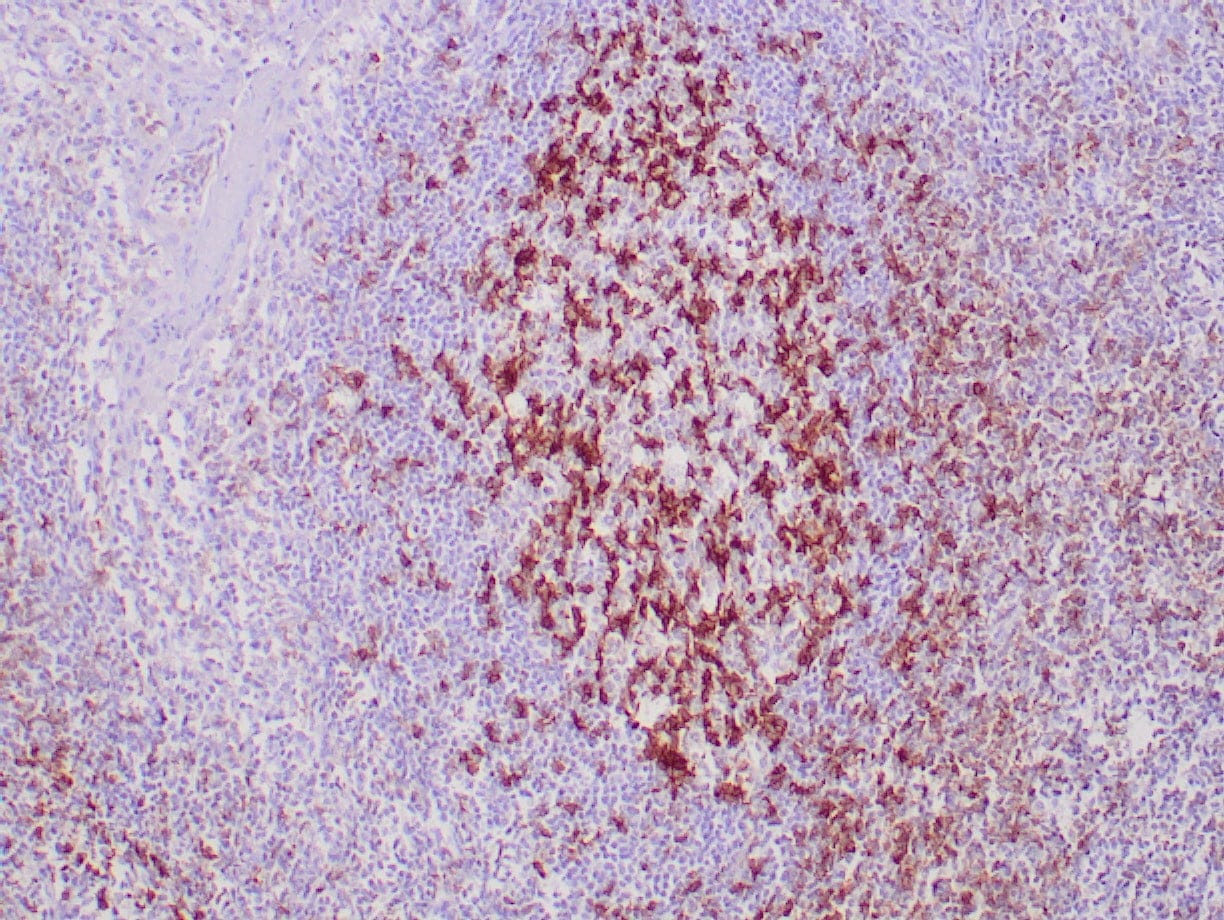 |
| Formalin-fixed, paraffin-embedded human tonsil stained with anti-PD-1 antibody using peroxidase-conjugate and DAB chromogen. Note cytoplasmic staining of T-cells |
Publications
| pmid | title | authors | citation |
|---|---|---|---|
| We haven't added any publications to our database yet. | |||
Protocols
| relevant to this product |
|---|
| IHC |
Documents
| # | SDS | Certificate | |
|---|---|---|---|
| Please enter your product and batch number here to retrieve product datasheet, SDS, and QC information. | |||
Only logged in customers who have purchased this product may leave a review.
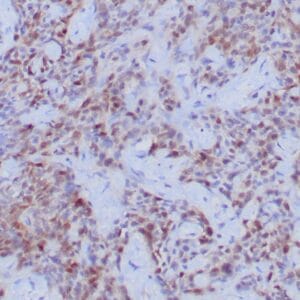

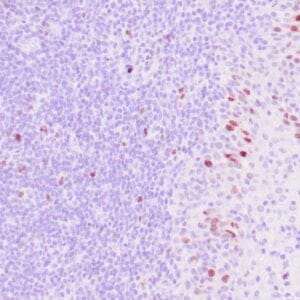
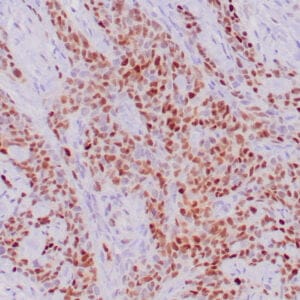
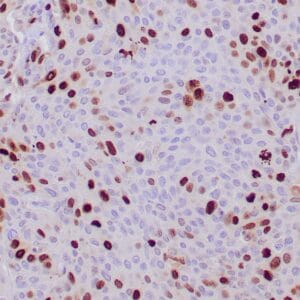
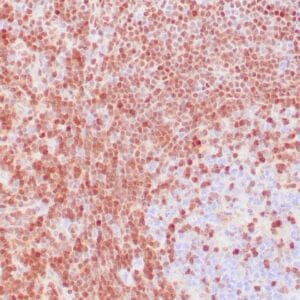

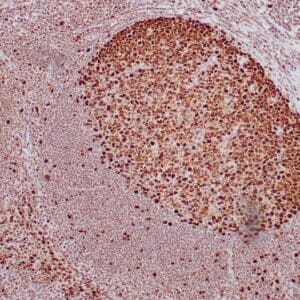
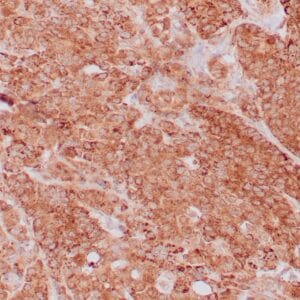
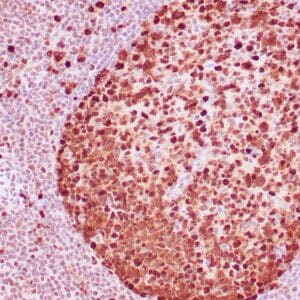

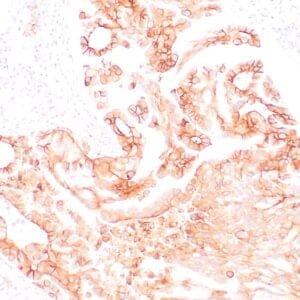
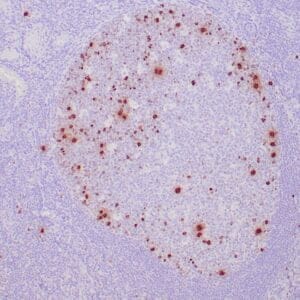

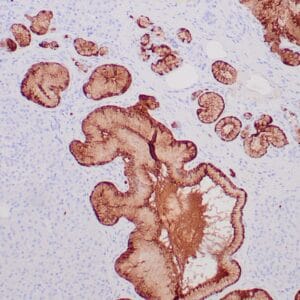
Reviews
There are no reviews yet.